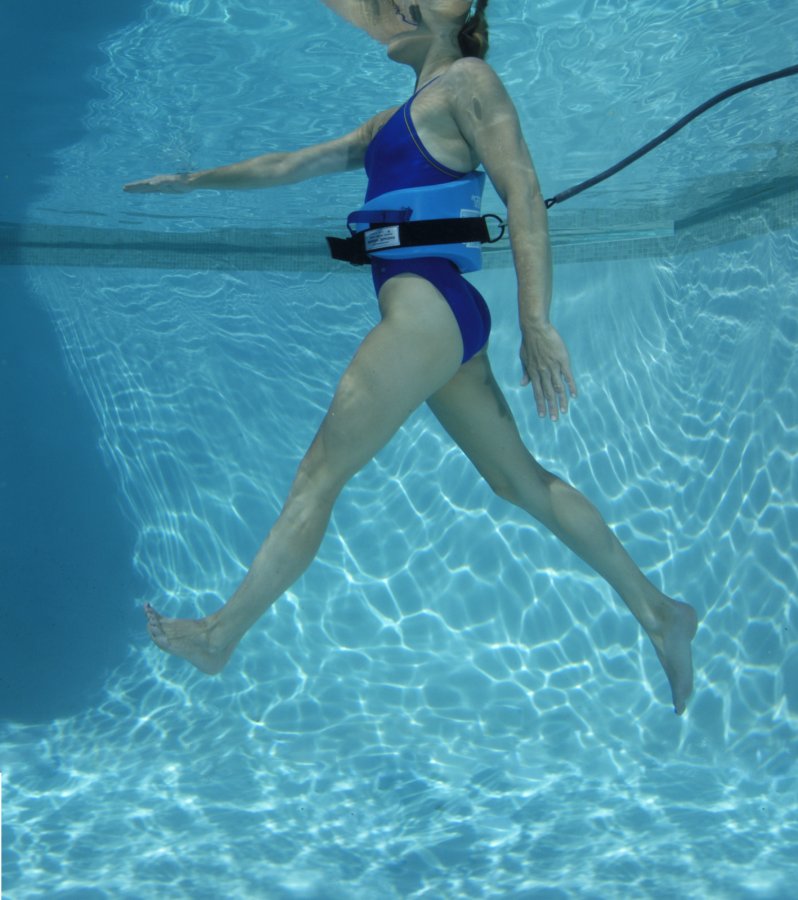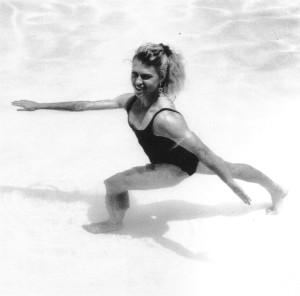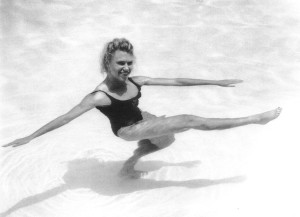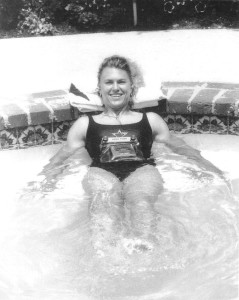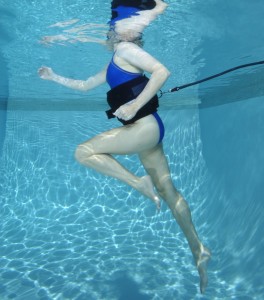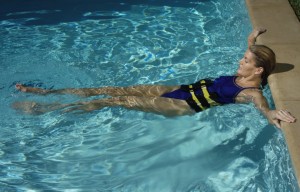After a major athletic effort, your body can feel out of balance. It might feel as though you need food, drink, a hot bath, a nap, or a massage. All of those can definitely help. But here’s another thing you may not have considered: a water workout to speed your recovery.
The demands placed on the body during exercise leave the muscles and the circulatory system in an altered state when the exercise is completed. Although the pumping action of the heart is responsible for blood reaching the muscles, there is no parallel system to return the blood to the heart and lungs for revitalization. Instead, the body relies largely on skeletal muscle contraction to squeeze the blood through the veins back toward the heart. As the muscles of the limbs contract, they exert pressure on the veins in the immediate area, and blood is pushed along its path. Valves housed in the veins allow the blood to flow in one direction only – toward the heart.
When exercise stops abruptly, the muscles are left with large volumes of waste-laden blood without a means for getting home. When exercise is performed in an upright position, there is pooling of blood in the legs. The faster this blood is returned to the heart, as when one performs a warm-down, the faster the body can return to its normal state of functioning.
After exercise, muscles are left in a shortened and swollen state. By means of stretching and lengthening exercises, the muscles are returned to their normal resting length and are better prepared for total recovery. When these exercises are performed in water, there are several extra benefits: 1) The hydrostatic pressure of the water flushes waste products out of the muscle tissues and into the bloodstream, and 2) the massage effect on the body of movement through water assists the return of blood to the heart.
The Water Warm-Down that follows has been used by elite and recreational athletes of many sports and has become invaluable as an integral part of their training programs. You can do this twenty-minute water warm-down:
- Immediately after a land-based workout or competition in which you have overexerted. You will be less sore tomorrow.
- After a sprint workout. “Untie” those knots in your hamstrings and gluteal muscles.
- After a long plane flight. A water warm-down helps alleviate jet lag.
- If you are physically or mentally tired and don’t feel up to your usual day’s training schedule. You will feel rejuvenated when you get out of the water.
If your muscles are sore but not your joints, choose the Shallow program. If your joints feel overworked, do the Deep program. Move slowly. Emphasize range of motion, not power or strength. Stretch and loosen the body. Don’t create more workload.
SHALLOW
Enter the pool and move to chest-deep water. Sit low in the water so that your leg muscles don’t have to do much work. Slowly do each exercise 10-15 times, depending on how you feel. Stretch and lengthen your muscles as you move.
1. Lunges. Start in the position shown below. Bounce and change which arm and leg are forward.
2. V-Kicks. Start in the position shown below. Bounce onto your right leg, lift your left leg and swing both arms to the left.
3. Front Kicks. Start in the position shown below. Notice how low she is in the water. Bounce onto your right leg and lift your left. Move the arms in opposition as shown.
4. Frog Jumps. Sit low in the water standing on both feet. Without jumping, lift both knees toward your chest as shown below. After you finish your reps in this position, do another set with your knees wide to the sides as shown below.
5. Kicking. Sit on a step or ledge of the pool and brace yourself as shown below. Perform a gentle flutter kick for about a minute then begin bicycling for another minute.
DEEP
Put on a flotation belt that will keep your chin above the water level. Move to the deep end of the pool. Spend at least three minutes doing each of these exercises.
1. Water Running. Use good form while you slowly run without impact as shown below.
2. Water Walking. Keep your legs relatively straight and stretch one forward and one backward gently as shown below.
3. Flies. Open your arms and legs then bring them back together.
4. Kicking. Sit on a step or ledge of the pool and brace yourself as in photo 9. Perform a gentle flutter kick for about a minute, then begin bicycling for another minute.
Ideally, you should move to the pool and your Water Warm-Down Recovery right after your tough workout, game, or race. But even if hours go by, or the entire day, your body will still thank you if you can slide into water’s magical freshness sometime before the day is over.
Lynda Huey, M.S., founder of CompletePT and Huey’s Athletic Network, is a former athlete and coach whose own injuries led her into the water to find fitness and healing. She was educated at San Jose State University where she starred on the track and field team during its golden years. Lynda is the author of The Complete Waterpower Workout Book.

